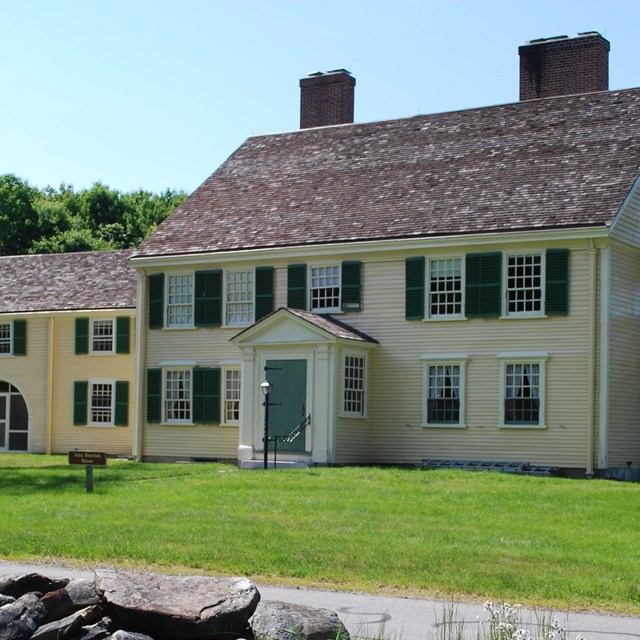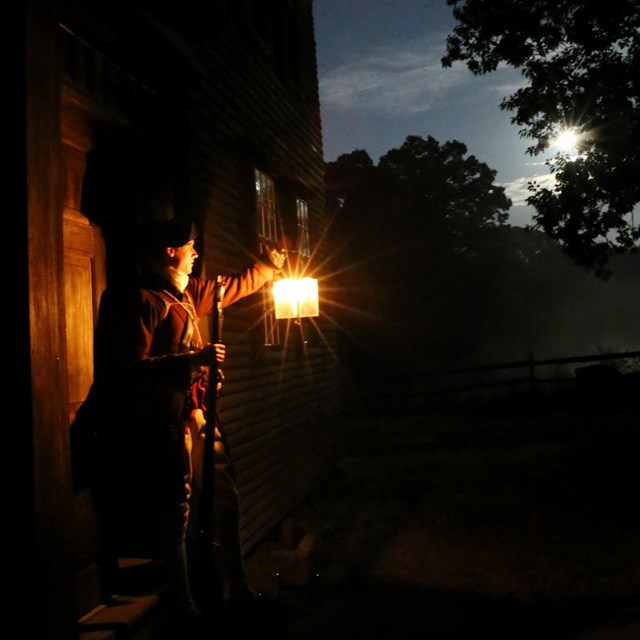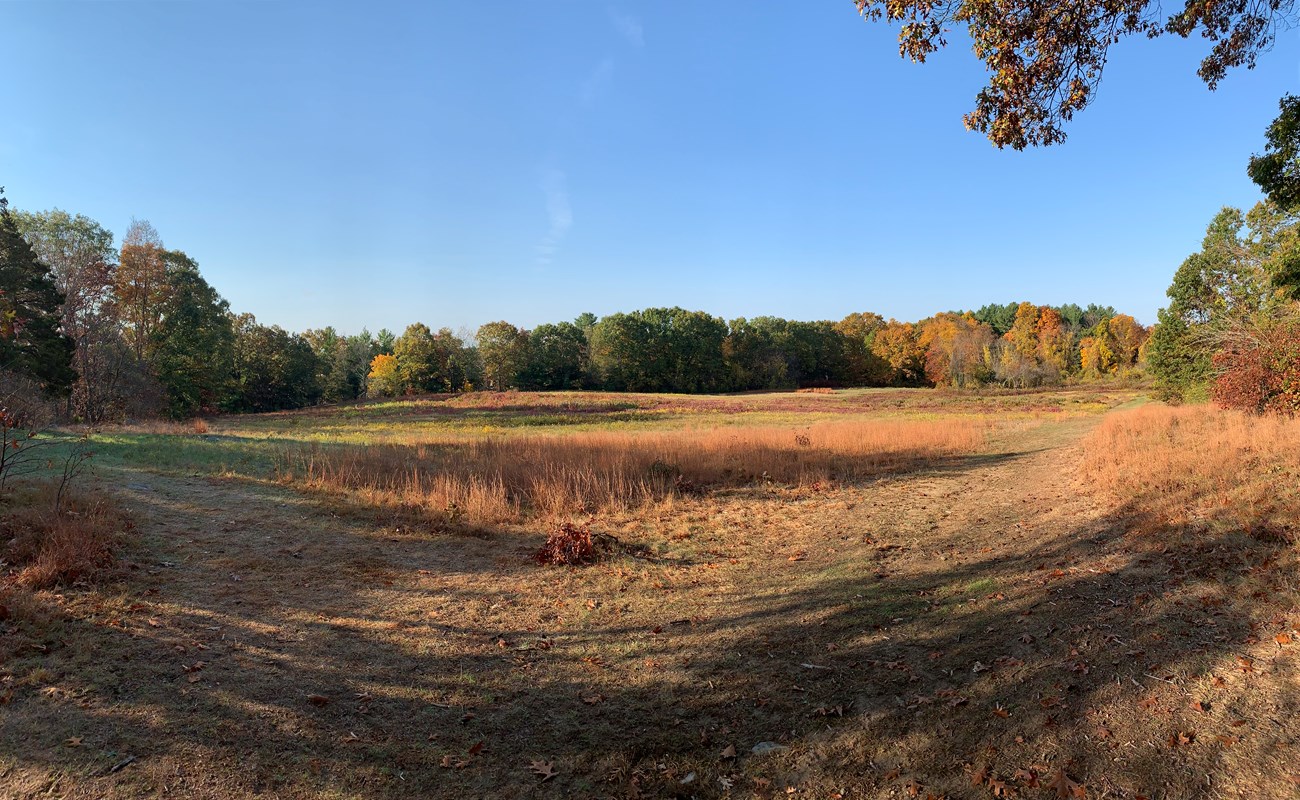
NPS Photo
Early History Of Fiske HillThe history of Fiske Hill stretches well beyond April 19, 1775. Human inhabitation of this region dates back over twelve thousand years and by the early seventeenth century, Algonquian people had been living along the Musketequid River, today known as the Concord River, for about a thousand years. Before contact with European settlers these indigenous peoples hunted large game in the surrounding forests including those that covered modern-day Fiske Hill.When Puritan families ventured inland around 1635, they claimed the prosperous land along the Musketequid River as their own. In a short time, European settlers cleared large tracts of forest to established Concord Plantation, now Concord, Massachusetts. One settler, David Fiske II arrived at Concord Plantation around 1647 and claimed the elevated terrain now called Fiske Hill. During the latter half of the 17th Century, David Fiske II and his wife Lydia established a homestead on the eastern slope of Fiske Hill at the western border of Cambridge, now known as Lexington. There the couple raised seven children including David Fiske III. Eventually the younger David built a farm near his father and together the Fiske's farmed the land until the end of their lives. When David Fiske III died in 1729 the farm passed to his son Ebenezer, who owned the land during the Revolutionary Period. In 1775, Ebenezer lived in his home on the eastern base of Fiske Hill with his son Benjamin, his daughter-in-law- Rebekah, and at least one enslaved man named "Pompee." Battle of the Bay RoadIn 1775 the Bay Road passed up and over the tall hill owned by Ebenezer Fiske. At the time of the battle wide meadows with small clusters of trees covered most of the hill. Benjamin Fiske, the son of Ebenezer Fiske lived in his father's home on the Eastern base of the hill with his wife Rebekah Fiske.
Those Regular soldiers passing the Fiske house had just fired into a group of Lexington, Militia gathered on the village green nearly two miles away. Rebekah continued,
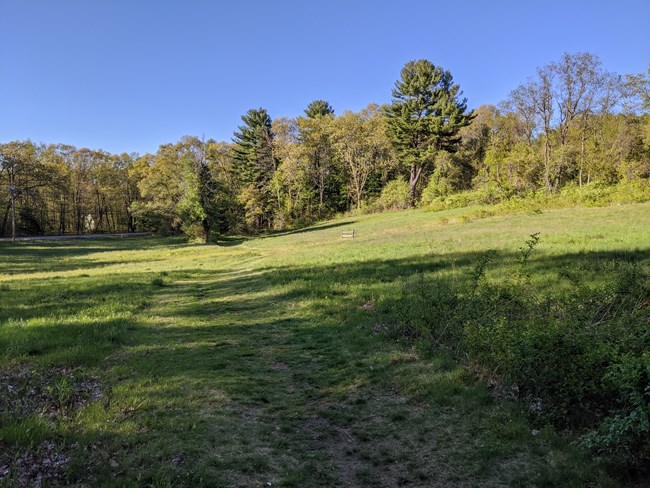
NPS Photo Shortly after the Fiske family fled, the running fight between colonial militia and British Regulars reached the farmstead. Utilizing scattered tree lots, stone walls, and piles of rail fence, colonial militia staged themselves around the Bay Road. In the distance the long column of weary and battered redcoats struggled toward Lexington; their ammunition nearly exhausted and ranks on the verge of collapse. As they climbed the winding road on Fiske Hill, Reading Minuteman Edmond Foster recalled;
To avoid complete disaster the Regulars rushed onward, leaving their dead and wounded strewn across the landscape. Near the Fiske House, some individuals stopped either to enter the home or retrieve water from the well. In one intense moment, Acton militiaman James Hayward came face to face with a British Regular exiting the house. According to a local legend recorded fifty years later, the British soldier cried out, “You are a dead man,” and Hayward replied, “and so are you!” Both fired and fell.
Aftermath: A Grim FateFor Rebekah Fiske, the horror of the day only grew once the fighting passed her home;
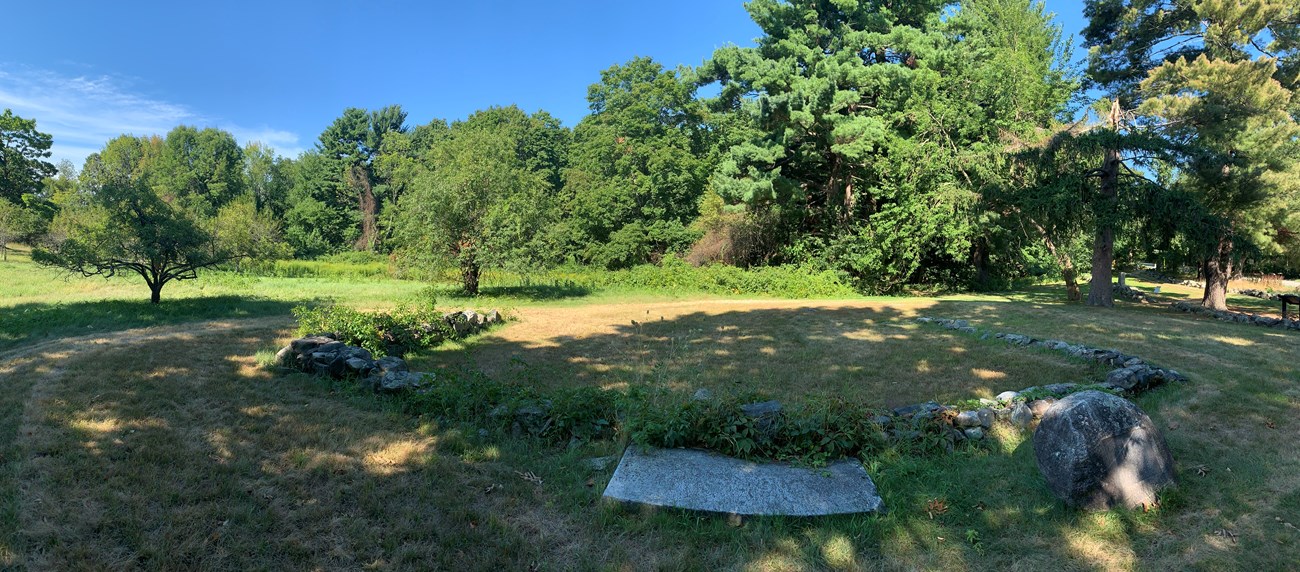
NPS Photo Care For The WoundedFollowing the end of fighting on April 19, 1775, Dr. Joseph Fiske, cousin of Ebenezer, visited the wounded soldiers Rebekah discovered. Later, Dr. Fiske submitted a bill to colonial leaders for care provided to “two of the king’s troops.” Although Dr. Fiske attended the wounded, the injuries sustained by the soldier Rebekah recorded as “dreadfully pierced with bullets,” were too great. In her closing statements, Rebekah concluded, ”My husband drew the two Britons off on a sled, and buried them in one of our pastures where they now lie, beneath a pine tree which has grown up out of their grave. The Irishman was the only one of the three that survived.’”
After the battle, the story of Fiske Hill and the bravery of James Hayward became critical aspects of the April 19, 1775 narrative. Although many accounts of the action remain speculative, those stories remain prominent in local remembrance. During the 19th Century local citizens also erected a monument to Hayward near the supposed well, while the grave of two British soldiers faded into obscurity nearby. British Grave Marker 

Left image
Right image
Development of Fiske HillAfter the battle, the story of Fiske Hill and the bravery of James Hayward became critical aspects of the April 19, 1775 narrative. Although many accounts of the action remain speculative, those stories remain prominent in local remembrance. During the 19th Century local citizens also erected a monument to Hayward near the supposed well, while the grave of two British soldiers faded into obscurity nearby. During the 19th and 20th centuries the world around Fiske Hill changed dramatically. Ebenezer Fiske died in late 1775 and did not live to see the new American Nation. Unfortunately, Benjamin Fiske similarly did not live long into this new era. When Benjamin died in 1785, Rebekah managed his estate and remarried. In her later years Rebekah rented out the old Fiske house but moved to her second husband’s home in Bedford. In the first decades of the 19th century, Scandal and murder rocked the Rebekah's new family. At that time, Rebekah reclaimed her Fiske name and returned to the little house on Fiske Hill where she lived until her death in 1845. When Minute Man National Historical Park was established in 1959, the landscape of Fiske Hill offered many opportunities for restoration. The park acted quickly and acquired nearly forty acres of Fiske Hill land. During the early phases of Park planning, NPS leadership looked to develop visitor services on Fiske Hill, given its close proximity too Route 128, and 2A. During this formative period, historic resources were restored, parking lots added, and an information shelter constructed in 1967. Eventually Fiske Hill connected to larger sections of the preserved battle road trail and the park uncovered the 1775 trace of the Bay Road. As Minute Man NHP acquired additional land, visitor services shifted elsewhere. Eventually the information shelter on Fiske Hill was replaced with a newer Visitors Center a mile west along the battle road. Today Fiske Hill remains a beautifully curated natural and historic landscape. Miles of trail web across the hillside, while the remains of the Ebenezer Fiske farm are preserved for generations to come. |
Last updated: March 30, 2022

